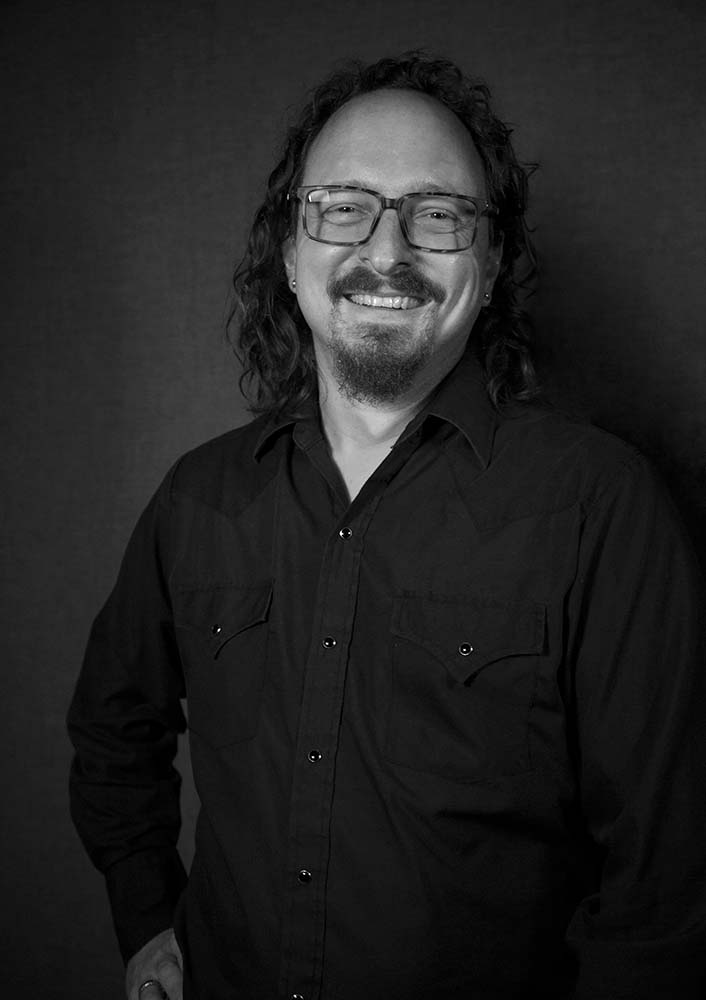BIOGRAPHY - 350 words

Boston native Matthew Mosher is an intermedia artist, research professor, and Fulbright Scholar who creates embodied experiential systems. Their work explores the intersections of fine art, computer programming, and critical making resulting in immersive installations, interactive sculptures, post-participatory data visualizations, and dynamic performances. Mosher applies creative conduits between digital technology and material forms to highlight our complex relationships with machines and each other. Their projects have engaged themes of meditation, gun violence, digital isolation, and tangible memory. Doing so empowers participants in their work to see the world from a new perspective while reexamine their role in society.
Mosher is currently an Associate Professor of Games and Interactive Media at the University of central Florida. Their pedagogy centers on the use of interaction design as a medium for critical inquiry and cultural innovation. They teaches a range of course from large undergraduate foundational lectures to small graduate studio seminars covering design topics of user interface, user experience, experimental multimedia systems, and physical computing, as well as the history and theory of New Media. To serve the larger arts community they sits on the College Arts Association professional practice committee, writing standards and guidelines used around the world. They also cofounded the Phoenix, Arizona based [nueBOX] performance arts residency program in 2014, which has provided studio space to over 75 artists.
Mosher received their BFA in Furniture Design from the Rhode Island School of Design in 2006 and their MFA in Intermedia from Arizona State University in 2012. In their more than 15 years working as an intermedia artist Mosher has exhibited at numerous international venues for contemporary art, including the International Symposium for Electronic Art, Electronic Literature Organization, Wharton Esherick Museum, Buffalo Creek Art Center, Mozarteum KunstWerk, and Argekultur Salzburg. Their research is published in the Association for Computing Machinery Computer-Human Interaction, Tangible Embodied Interaction, and New Interfaces for Musical Expression conference proceedings, and reviewed in Wired and Interactions magazines. In 2010 the Phoenix New Times included him as one of the top 100 creatives to watch, and in 2019 they completed a Fulbright Scholar Fellowship in Austria on preserving memories in physical mementos.
BIOGRAPHY - 215 words
Matthew Mosher is an intermedia artist, research professor, and Fulbright Scholar who creates embodied experiential systems. Their work explores the intersections of fine art, computer programming, and critical making resulting in immersive installations, interactive sculptures, post-participatory data visualizations, and dynamic performances. Their projects have engaged themes of meditation, gun violence, digital isolation, and tangible memory. Mosher creates conduits between digital technology and material forms to highlight our complex relationships with machines and each other. Doing so empowers participants in their work to see the world from a new perspective while reexamining their role in society.
Mosher is currently an Associate Professor of Games and Interactive Media at the University of Central Florida. They received their BFA in Furniture Design from the Rhode Island School of Design in 2006 and their MFA in Intermedia from Arizona State University in 2012. Mosher has exhibited at numerous international venues for contemporary art, including the International Symposium for Electronic Art, Electronic Literature Organization, Wharton Esherick Museum, Buffalo Creek Art Center, Mozarteum KunstWerk, and Argekultur Salzburg. Their research is published in the Association for Computing Machinery (ACM) Computer-Human Interaction (CHI), Tangible Embodied Interaction (TEI), Creativity and Cognition (CC), Designing Interactive Systems (DIS), and New Interfaces for Musical Expression (NIME) conference proceedings. Mosher maintains studios in Central Florida and Cape Cod.
BIOGRAPHY - 125 words
Boston native Matthew Mosher is an intermedia artist, associate professor, and Fulbright Scholar who creates embodied experiential systems. Their work explores the intersections of fine art, computer programming, and critical making resulting in immersive installations, interactive sculptures, post-participatory data visualizations, and dynamic performances. Their projects have engaged themes of meditation, gun violence, digital isolation, and tangible memory. Mosher creates conduits between digital technology and material forms to highlight our complex relationships with machines and each other. Doing so empowers participants in their work to see the world from a new perspective while reexamining their role in society. They received their BFA in Furniture Design from the Rhode Island School of Design in 2006 and their MFA in Intermedia from Arizona State University in 2012.
But how did I get here?
My background is in Furniture, Jewelry, and Performance Design. These forms are inherently interactive due to their intimacy with the human body. Towards the end of my undergraduate studies, I started experimenting with computational media to add a conversational responsiveness to my work. I have been blending coding with physical forms ever since.